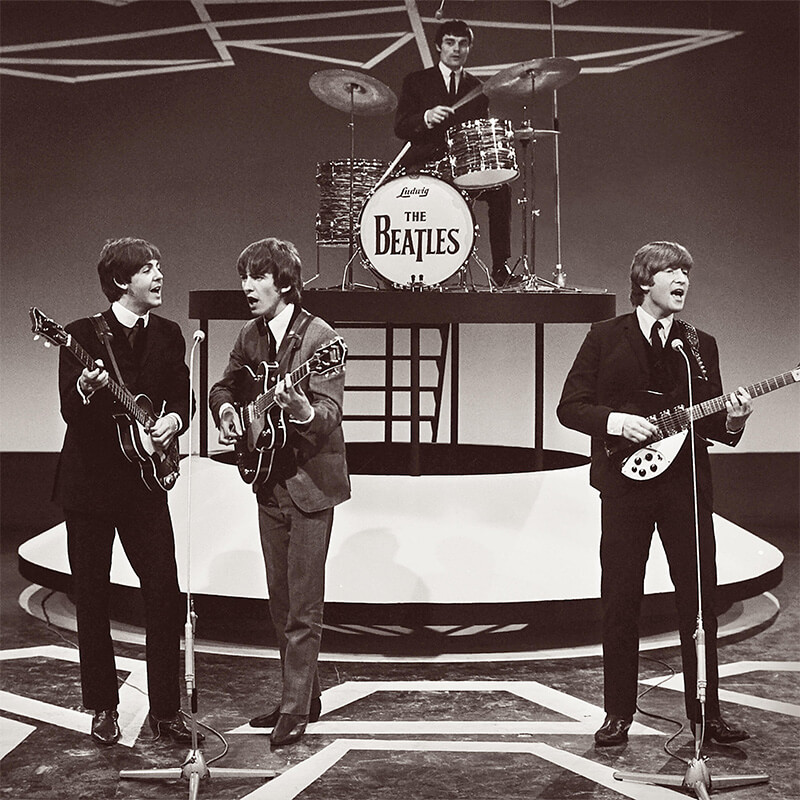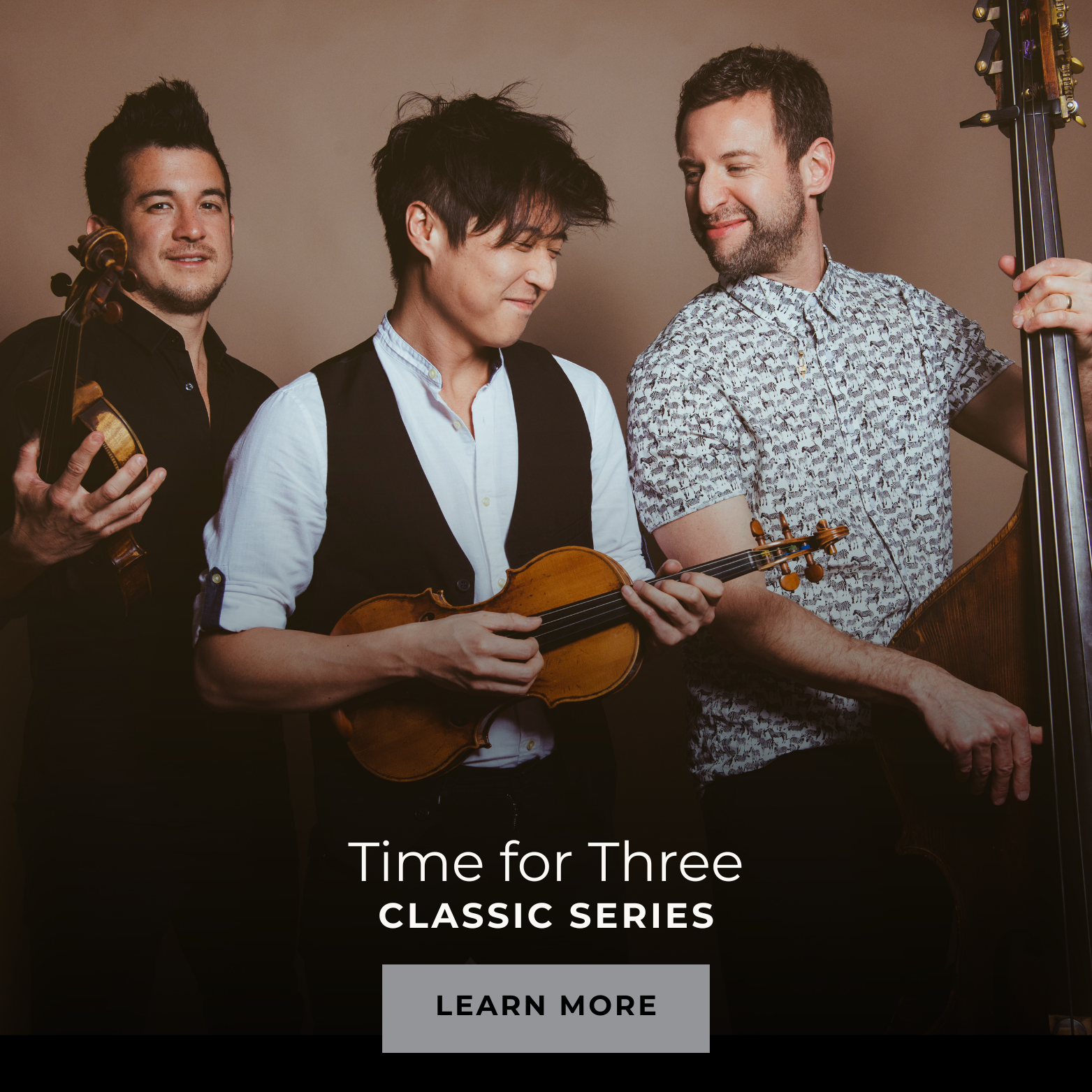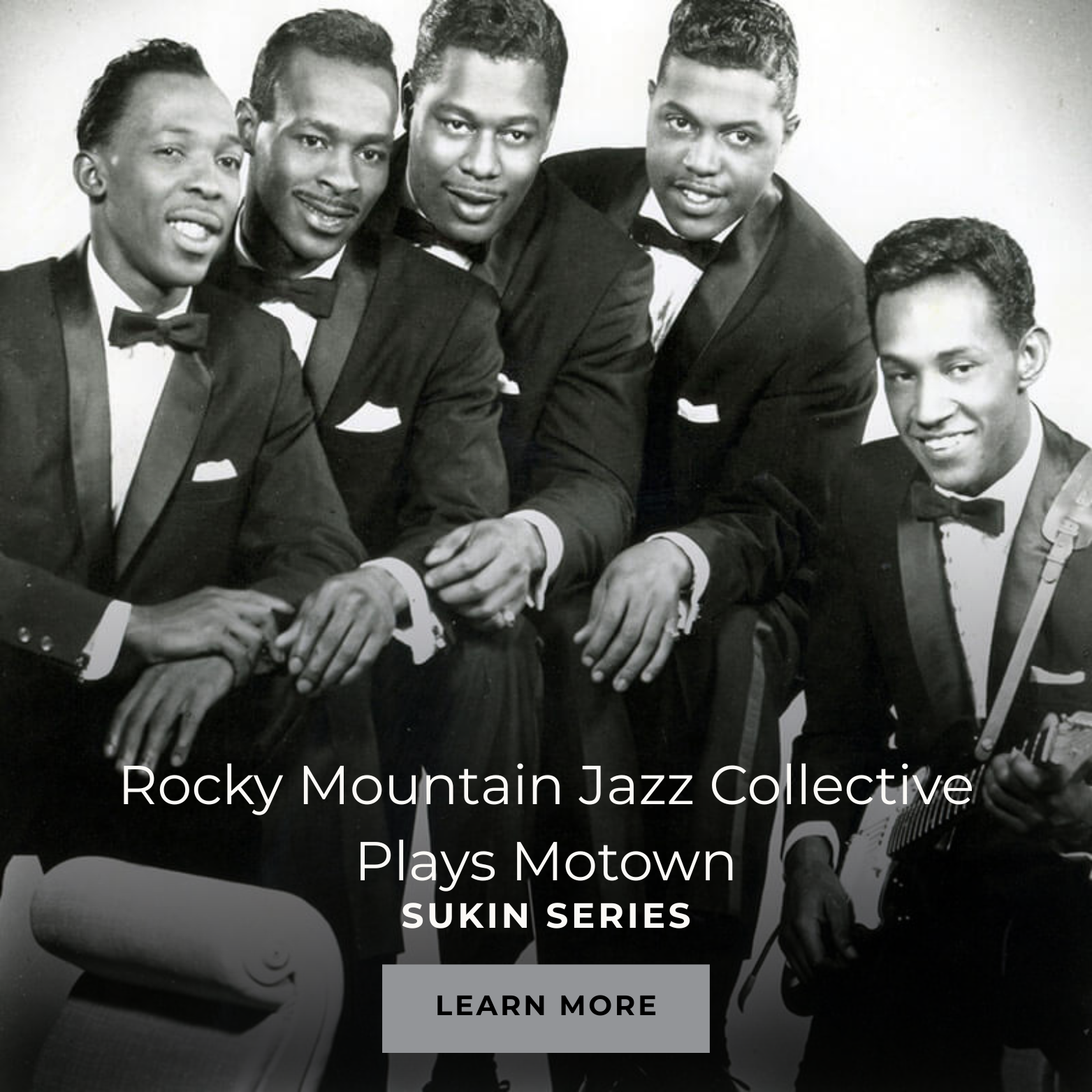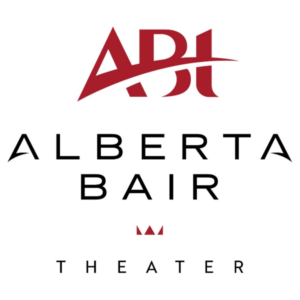Events

Classic Series
75 Years of Music in One Night
Saturday
Oct 25, 2025
7:30 pm
Alberta Bair Theater
2801 3rd Ave N
$20-77
Time flies when you’re having fun! Let us take you on a whirlwind tour of symphonic music in the Magic City. This dynamic tribute begins with Glière’s Russian Sailors’ Dance which was first programmed on the inaugural 1951 concert. The tour continues throughout each decade since, ending with a mix of contemporary pieces such as Bohemian Rhapsody and Kenji Bunch’s In the Car. Join us as we embrace our collective musical heritage together in brilliant retrospect.
Call 406-256-6052 to order tickets or 406-252-3610 for more information.
- Hamilton isn't the first Broadway play Lin Manuel Miranda has composed and then casted himself as the main character. He also composed In the Heights, and played the character Usnavi De La Vega, which premiered a whole 10 years before Hamilton in 2005 and recently was adapted into a film in 2021.
- In the early 90s, hate groups in Billings organized a wave of racist and antisemitic violence, our Music Director at the time, Uri Barnea, and his family were not spared in the attacks. In response to this the community came together under the slogan "Not in Our Town!" Confronted by the united town, the violence backed off, vandalism stopped, hate literature disappeared, and the anonymous calls ended. The inclusion of Schindler's List in this program is to remember the strength of our community during that time.
REINHOLD GLIÈRE (1875-1956)
Russian Sailors' Dance from The Red Poppy
Sometimes called the “Father of Soviet Composers,” Glière studied at Moscow Conservatory, where he won the Gold Medal in composition and later became an instructor of famous composers such as Sergei Prokofiev, both privately and in posts at the Kiev and Moscow Conservatories. Unlike so many of his contemporaries in Russia, Glière never experienced problems with the Soviet government and was even named a People’s Artist.
In 1926–27 he wrote the music for the ballet, The Red Poppy. Called “the first Soviet ballet on a revolutionary subject,” The Red Poppy takes place in the 1920s at a seaport in China. A ship’s captain sees a group of laborers being overworked and abused, and decides to step in. This moves the lovely Tao-Hoa, who offers the captain a red poppy as a symbol of her love. However, when Tao’s employer, Li Shan-Fu, finds out about this, he jealously orders her to kill the captain. She refuses and is later killed by Li in the middle of a dockside riot. The closing number of the ballet’s first act, an arrangement of an old Russian folk song called, “Yablochko” (“Little Apple”), has gained worldwide fame as the “Russian Sailors’ Dance.” After a short introduction, the folk song theme is introduced in the bass and treated to a series of increasingly energetic variations, building to a final big climax. The above notes were written by Chris Morrison for our September 2010 performance, one of nine programs on which the work has been featured.
LEONARD BERNSTEIN (1918-1990)
Mambo from West Side Story (1957)
Since its opening on September 26, 1957, West Side Story has been a landmark in American musical theater history. At the time, the phrase “Broadway musical” was synonymous with “musical comedy.” Musical theater typically took a lighthearted approach, even when broaching serious issues. But West Side Story, perhaps one of the most famous adaptations of William Shakespeare’s Romeo and Juliet, exposed audiences to gang violence on the streets of New York, showing how racism and xenophobia create a system which dooms the youths of working-class families. And unlike the typical Broadway musical of the 1950s and before, West Side Story does not offer audiences a happy ending.
Fast-paced with Cuban-inspired rhythms, Mambo is one of the musical numbers in the “Dance at the Gym” scene, where the Jets and Sharks confront each other through dance and the stage is set for the romantic connection between Tony and Maria. Throughout the scene, social differences are (perhaps not so) subtly displayed: While the Sharks dance in a circle, a reflection of their Latino culture, the Jets dance in a line more befitting their Polish heritage.
ARR. ROBIN BEAUCHAMP
Song of the 1960s [4"]
including
THE BEATLES
JOHN LENNON (1940-1980)
SIR PAUL McCARTNEY (B. 1942)
Got to Get You Into My Life (1966)
THE JACKSON 5
THE CORPORATION
I Want You Back (1969)
The Fab Four made their iconic U.S. debut on The Ed Sullivan Show on February 9, 1964, watched by over 73 million people, marking the beginning of the “British Invasion” of U.S. airwaves. Ever evolving, the band pushed boundaries of rock music, blending in classical, Indian, and, uh, psychedelic influences. A fine example of the latter is “Got to Get You Into My Life,” the penultimate track on their 1966 album, Revolver. Styled with colorful brass, the song is an homage to the Motown Sound and, according to McCartney, is “actually an ode to pot.”
Originally written for Gladys Knight & the Pips, “I Want You Back” was reworked by Motown’s hit-making team, The Corporation, to become the Jackson 5’s debut single on the Motown label. Its infectious energy, dynamic bassline, and the extraordinary vocal talent of a young (11-year-old) Michael Jackson made it an instant hit when it was released on October 7, 1969. When the song hit No. 1 in January 1970, the Jackson 5 became the first group in pop history to have their debut single top the Billboard Hot 100. It kicked off a historic run of four consecutive No. 1 singles—a feat that hadn’t been done before—solidifying them as Motown’s next major act.
FREDDIE MERCURY (1946-1991)
Arr. NICHOLAS HERSH
Bohemian Rhapsody for solo viola and orchestra (1975)
On August 24, 1975, Queen started recording “Bohemian Rhapsody” for their A Night at the Opera album. At the time, “state-of-the-art” recording meant 24-track analog tape. The harmonies on the opera section (all sung by Mercury, drummer Roger Taylor, and guitarist Brian May) required 180 separate overdubs and extensive manually splicing (i.e., cutting the desired sub-mixes with razor blades and assembling in the correct sequence using adhesive tape), and eventually the tape had been run over the recording heads so many times that it became almost transparent. In the end, it took three weeks and five different studios to complete the track.
Despite the effort, Queen’s record company, EMI, was reluctant to release it as a single. After all, the song had no chorus and, at nearly six-minutes, was surely too long and too “weird” for radio (as opined by contemporary Elton John). Events turned, though, after British DJ Kenny Everett was slipped an early pressing with strict instructions not to broadcast (wink, wink). Somehow (his finger must have slipped), Everett played the song on London’s Capital Radio 14 times over a weekend. Callers flooded the station and local record stores with requests for the song, forcing the EMI suits to relent.
Needless to say, “Bohemian Rhapsody” became a commercial success, staying at the top of the UK Singles Chart for nine weeks and selling more than a million copies in a couple of months. It currently ranks as the third best-selling UK single of all time (behind Elton John’s Princess Diana tribute “Candle in the Wind” and Band Aid’s “Do They Know It’s Christmas?”) and was inducted into the Grammy Hall of Fame in 2004.
ASTOR PIAZZOLLA (1921-1992)
Arr. EDUARDO MARTURET (b. 1953)
Oblivion (1982)
The son of Italian immigrants who spent a good part of his growing-up years in New York’s Greenwich Village, Piazzolla always remained a bit of an outsider in his native land. In 1936, he resettled in Argentina, and his skills playing the bandoneon, the signature instrument of authentic Argentinean tango, soon won him a place in the traditional tango orchestras which were then at their height.
But Piazzolla was no traditionalist. In 1954, after studying with Alberto Ginastera, he won a scholarship to study with the great French pedagogue Nadia Boulanger in Paris. His restless musical mind soaked up French impressionism, contemporary atonality, and improvisatory jazz, but Boulanger urged him to stay close to his tango roots, declaring, “Here is the true Piazzolla!”
Piazzolla returned to Argentina and developed what he called “tango nuevo.” This contemporary form of tango went far beyond smooth popular dance into the realm of serious concert music, retaining tango’s poignancy and lyricism while rejecting its tendencies toward sentimentality. Oblivion, from 1982, remains one of Piazzolla’s most popular tangos. Described as “haunting” and “atmospheric,” it evokes a sense of melancholy that writer Tim Sestrick once called a “whispered sorrow.”
While Piazzolla’s tango compositions won fans abroad, his fellow Argentineans resisted his innovations nearly up until the time of his death in 1992. “The old tango, the one they loved was dying. And they hated me.” But by modernizing the form, Ástor Piazzolla made it more eternal: In 2009, UNESCO declared tango to be an Intangible Cultural Heritage.
JOHN WILLIAMS (b. 1932)
Theme from Schindler's List (1993)
Based on the 1982 novel of historical fiction by Thomas Keneally, Schindler's List tells the true story of Oskar Schindler (Liam Neeson), a wealthy Polish industrialist and member of the Nazi party who, upon seeing the injustices visited upon the Polish Jewish community during World War II, began employing potential victims of Nazi violence as workers in his factories, protecting them from deportation and execution. Spielberg wanted his film version to be respectful of the legacy of the Schindlerjuden, a group of around 1,200 people Schindler had saved.
Schindler’s List followed hot on the heels of Spielberg and Williams’ collaboration on Jurassic Park—and it couldn't be more different. After viewing the film for the first time, the composer told the director: “You need a better composer than I am for this film.” Spielberg replied, “I know. But they're all dead!”
Williams kept his musical approach simple and free of melodrama. He and Spielberg also resolved to use music sparingly, so when it was given voice, it would have greater effect. Ultimately only 51 minutes of underscore was written for the three-hour film, and the music does not make an entrance until 17 minutes into the first reel, with most of the score unfolding during the final hour of the film. The orchestra is restrained, predominantly string and woodwind based, with choral elements in some tracks, and many of the main themes taken up by a solo violin—played by the venerable Itzhak Perlman—or woodwind instrument. The Main Theme, heard tonight, reveals Williams’ gift for capturing a film’s emotional core. Crafted as a Hebraic lullaby, the piece is fully romantic, harkening back to 19th century European sensibilities.
Williams needn't have worried about doing Schindler's List justice. It won him an Academy Award, his fifth (after Fiddler on the Roof, Jaws, Star Wars, and E.T. the Extra-Terrestrial), as well as a BAFTA Award, a Golden Globe, and a Grammy.
JOHN WILLIAMS (b. 1932)
Excerpts from Far and Away (1992)
Directed by Ron Howard and starring then-Hollywood power couple Tom Cruise and Nicole Kidman, Far and Away is a historical romantic drama set in the late 19th century that follows two Irish immigrants chasing the American dream. Much of the filming took place on a ranch just outside of Billings, where the wide-open landscapes served as a stand-in for the Oklahoma territory during the 1893 land rush scenes, while the historic Billings Depot was used as the setting for a gritty (NYC) bare-knuckle boxing scene. Unfortunately, the Oscar-nominated cinematography is often overshadowed by the film’s promotion of American exceptionalism and sugar-coating or disregard of the hardships faced by immigrants and the Native Americans whose land white settlers stole, and, well, Tom Cruise’s cringe-worthy (attempt at) Irish brogue.
Immediately preceded by such classics as Home Alone and Hook, and immediately followed by legendary works like Jurassic Park and Schindler’s List, John Williams’ sole collaboration with Ron Howard has become one of his overlooked masterpieces: a broad and adventurous work for the full orchestra, augmented by traditional Irish instruments including uilleann pipes, fiddles, pan flutes, penny whistles, and bodhrán drums. This blend of the Irish old country and the adventurous promise of the New World makes for an appealing and massively enjoyable combination, and earned Williams his 36th Oscar-nomination for Best Original Score.
KENJI BUNCH (b. 1973)
Symphony No. 1: III. In the Car
Each movement of Kenji Bunch’s Symphony 1, Lichtenstein Triptych, draws its name and inspiration from a Roy Lichtenstein painting. The final movement, In the Car, depicts the iconic 1963 painting of a woman and man sitting tensely in a car, the space between them charged with unspoken emotion—a moment frozen in dramatic stasis.
Bunch translates this tension into music through urgent rhythms, dramatic swells, and tightly constructed jazz and pop motifs that evoke the feeling of motion—both physical and emotional. The orchestration is colorful and vivid, echoing the bold lines and saturated hues of Lichtenstein’s visual style, capturing both the literal experience of a car ride and the psychological undercurrents of anticipation, conflict, and introspection.
As a composer, Bunch considers his current mission to be, “the search for and celebration of shared emotional truths about the human experience from the profound to the absurd, to help facilitate connection and healing through entertainment, vulnerability, humor, and joy.”
LIN-MANUEL MIRANDA (b. 1980)
You'll Be Back From Hamilton
Since its premiere Off-Broadway in 2015, Hamilton has become one of the most successful American musicals in history. The show follows the life and times of founding father Alexander Hamilton, an orphan, and immigrant who rose to play an essential role in the early years of the United States as a politician and banker. Fascinated by Ron Chernow’s biography on Hamilton, Miranda originally planned to write only a concept album “wherein I would write some songs that were like highlights of Hamilton’s life, à la Jesus Christ Superstar or Evita, and then someone would figure out how to stage it later.”
Fortunately for us, his plans evolved.
Hamilton juxtaposes its historical setting with music mostly* inspired by hip-hop and R&B. By purposely casting non-Caucasian actors in lead roles—despite many of the historical figures being white—Miranda aimed to portray American history through the more equal and diverse lens of the modern-day. As he explained to The New York Times, “This is a story about America then, told by America now, and we want to eliminate any distance—our story should look the way our country looks.” This diversity also allows a wide range of vocal talents to be considered for each role, regardless of appearance.
*There are some notable exceptions to the overall music genres used. The song, “What’d I Miss,” performed by Thomas Jefferson, is styled after older jazz and soul music, a subtle nod to Jefferson’s age compared to the rest of the Founding Fathers, as well as his lack of progressive ideals. Similarly, tonight’s “You’ll Be Back,” performed by King George III of England, is styled after the English rock band, The Beatles, thus reflecting the character’s foreign nature, as compared to the American main characters.
Three "Bridgerton" Covers
PETER BROWN & ROBERT RANS
Arr. ALISON GILLIES
Material Girl
MOZELLA, STEPHAN MOCCIO, SACHA SKARBEK, DR. LUKE & CIRKUT
Arr. ALISON GILLIES
Wrecking Ball
MICHAEL DEAN PARSONS & KRIS BOWERS
Arr. MARK LANSOM
Theme from Bridgerton
Period dramas have long captivated audiences—note the near-constant revivals of Jane Austen’s material throughout the years. Helmed by Shonda Rhimes, though, the Netflix full-scale adaptation of Julia Quinn’s Bridgerton series, brings not only the charm of Regency England with its polite society rules to the small screen, but unmasks the tumultuous and often scandalous private lives of its characters (vibrantly portrayed by a color-blind cast).
Due to the novelty of what is happening on the screen, it isn’t sufficient to simply use period music on the soundtrack. Alongside composer Kris Bowers’ original orchestral score, covers of contemporary pop songs reimagined with classical instruments enhance the storyline by helping audiences relate the emotions displayed by the cast to music they already have an attachment to—bridging the gap between past and present.
While the classical crossover soundtrack, like Bridgerton itself, is performed to exact period standards, it is sweeping, sensual, and fun. And just as Bridgerton invites viewers into what would have been a closed and privileged section of society, its score has invited new fans into the world of classical music, which perhaps they may have previously viewed as stuffy or exclusive.
STACY GARROP (b. 1969)
Spectacle of Light
The Chicago-based ensemble, Music of the Baroque, commissioned Garrop to compose a piece in honor of their 50th anniversary season, which would premiere on a concert entitled, “Baroque Fireworks.” Exploring just what aspect of Baroque fireworks to represent, Garrop became “mesmerized” by an etching of a 1749 fireworks spectacle that took place on the River Thames in honor of Great Britain’s King George II—the very same event for which George Frideric Handel wrote Music for the Royal Fireworks:
“I decided that Spectacle of Light would represent the experience of a fireworks show. The music starts with great anticipation as the crowd waits in darkness, then a single firework illuminates the sky, followed by a massive eruption of light, color, and sound. After this initial frenzied burst, the fireworks quiet down into a slower-paced, mesmerizing display of colors before building to a big, fiery ending. As a tip of the hat to Music of the Baroque, I worked a few salient elements of the baroque style into my own musical language, as well as found a few choice spots to add a few subtle hints of Handel’s Royal Fireworks.”
MODEST MUSSORGSKY (1839-1881)
Orch. MAURICE RAVEL (1875-1937)
The Great Gate of Kiev from Pictures at an Exhibition
Originally written for solo piano and not published until five years after the composer’s death, Pictures at an Exhibition may have remained an obscure novelty had the legendary conductor Serge Koussevitzky not commissioned French composer Maurice Ravel to orchestrate the work for him and the Boston Symphony.
The impetus for Pictures came from the unexpected death of Mussorgsky’s close friend and fellow Russian nationalist, the artist Victor Hartmann. After attending a memorial exhibition of Hartmann’s drawings and watercolors, Mussorgsky was inspired to use some of the works displayed as the basis for a suite of piano pieces. Hartmann’s art encompassed architectural designs, theatrical scenery and costumes, designs for craft work, studies of outstanding buildings, and scenes and portraits of everyday life.
The art walk concludes with the impressive Great Gate of Kiev, inspired by Hartmann’s entry in an architectural competition for a new gateway for the city of Kiev. The processional-like feeling of this music builds to a grand and awesome climax.
The concert will showcase 80 minutes of music and will include a 20-minute intermission.
Whenever you want! Seriously, the tradition of clapping only at the end of pieces was only for a short time in the history of music. Typically, people like to clap after a great solo in a jazz tune, an impressive dance move, or after a great movement (section) in a symphony. If you really like a piece, clap at the end of the movement and yell "encore" if you want to hear more. (We love playing encores!)
Reserved Seating:
Tier 1 ticket - $77
Tier 2 ticket - $70
Tier 3 ticket - $61
Tier 4 ticket $45
Under 30/Student:
Tier 2 ticket - $39
Tier 3 ticket - $34
Tier 4 ticket - $20
*all ticket prices do not include box office fees
Tickets start at $45 for adults, $20 for under 30 and students, and go up to $77 based on the seat location. The least expensive seats are in the back of the balcony and the front row closest to the stage.
Here are some other helpful tips you should keep in mind:
- Interested in additional savings? Buy a subscription! Contact us at 406-252-3610 or visit our offices at 2820 2nd Avenue North and we'd be more than happy to find the best deal for you. Subscriptions for our 2025–2026 season are available!
- If you’re a student, veteran, or active duty military, be sure to bring your student/VA/Military ID for great discounts!
Third-party tickets are not accepted. All tickets must be purchased through the Alberta Bair Theater Box Office.
More than anything, we want you to have fun and express your own style when you come to the Billings Symphony, so dress in a way that works for you. Some people love dressing up and going out—if that’s you, do it and you won’t be the only one, we promise. If you prefer to be more casual, then you probably won’t be the only one dressed casually, either. In short, you do you, and we’re just glad you’re joining us.
On-Street Parking
On City streets, there is both metered parking and posted parking. Metered parking times range from 2 hours to 10 hours and is free after 5 pm and on weekends.
There are two free handicap parking spots on the corner of North Broadway in front of U.S. Bank.
Garages
Park 1
Credit/Debit Cards Only. Located at 2912 Third Avenue North and is open to the public 24-hours per day – the office is open Monday through Friday, from 10:30am-6:30pm. There is free parking on Sundays.
Park 2
Credit/Debit Cards Only. Located at 2651 First Avenue North, Park 2 is open to patrons 24-hours per day – the office is open from 7:15am – 11:00pm, Monday through Saturday.
Park 3
Accepts Cash. Located adjacent to City Hall at 210 North 27th Street and is open 7am-11pm – the office is open Monday through Friday from 10:30am – 6:30pm. There is free parking on Sundays.
Park 4
Located at 515 North 31st Street. The garage and office are open only Monday through Friday from 5:30am – 9:30pm. After 9:30pm, parkers are unable to remove their vehicles from the garage.









